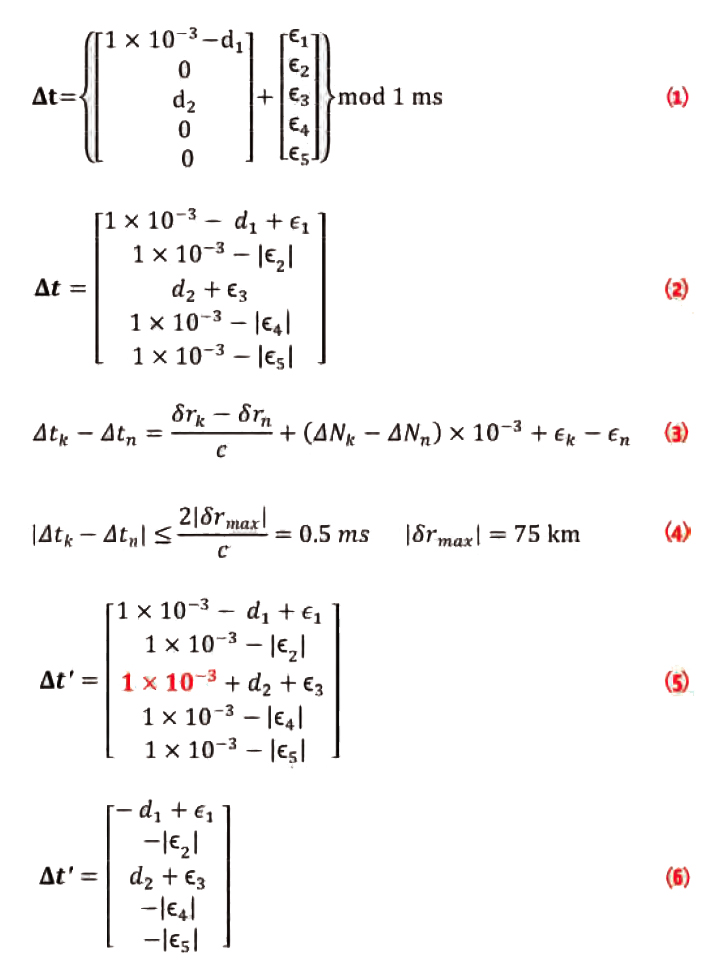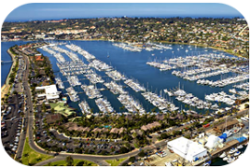Q: What is C/N0 and how is it calculated in a GNSS receiver?
A: C/N0 (carrier-to-noise density) is the ratio of received carrier (i.e., signal) power to noise density. Higher C/N0 results in reduced data bit error rate (when extracting the navigation data from the GNSS signals) and reduced carrier and code tracking loop jitter. Reduced carrier and code tracking loop jitter, in turn, results in less noisy range measurements and thus more precise positioning.
Q: What is C/N0 and how is it calculated in a GNSS receiver?
A: C/N0 (carrier-to-noise density) is the ratio of received carrier (i.e., signal) power to noise density. Higher C/N0 results in reduced data bit error rate (when extracting the navigation data from the GNSS signals) and reduced carrier and code tracking loop jitter. Reduced carrier and code tracking loop jitter, in turn, results in less noisy range measurements and thus more precise positioning.
Note that C/N0 is not the same as SNR (signal-to-noise ratio), although the terms are sometimes used interchangeably. Effectively, C/N0 assumes that the noise has infinite bandwidth (and thus power) and therefore characterizes it using a density, that is, as the amount of noise power per unit of bandwidth (i.e., watts/Hz).
Conversely, SNR considers the total noise power in a certain bandwidth (i.e., watts). C/N0 can be derived from SNR if the noise bandwidth of the SNR measurement is known. For example, one manufacturer’s GPS receiver displays SNR as a figure of merit for a GNSS signal; however, in this receiver, C/N0 is typically 30 decibels higher than the displayed SNR.
C/N0 provides a metric that is more useful for comparing one GNSS receiver to another than SNR because the bandwidth of the receivers is eliminated in the comparison. How the effective noise bandwidth (NBW) of a GNSS receiver is chosen is beyond the scope of this article but can be computed/defined based on a receiver’s hardware implementation, as will be briefly discussed later.
Theoretical C/N0
When developing the analog front end for a digital-sampling GNSS receiver, it is useful to examine a theoretical estimate of C/N0 as an aid in determining the total gain required by the analog front end and the receiver noise temperature required for the desired level of receiver performance.
. . .
Estimating CN0 in a GNSS Receiver
Carrier power to noise density can be estimated accurately based on measurements taken in a digital sampling GNSS receiver.
. . .
Noise Power Estimation
Noise power can be estimated using the Q arm of the receiver. Note that noise power can also be estimated using the I accumulator if the mean value of the de-spread signal is accounted for. On a more complicated note, if a receiver were to display different I and Q variances (noise powers) that would be an indication of a phase noise problem with the receiver. A discussion of phase noise is beyond the scope of this article.
. . .
C/N0 Estimation
Given the carrier power and noise power estimates from the previous sections and knowledge of the noise bandwidth of the IF filter, the C/N0 can be estimated. In a typical GNSS receiver, the IF filter sets the NBW. This might typically be a two megahertz–wide SAW (surface acoustic wave) filter for a low performance GPS L1 CA receiver.
. . .
This conversion from SNR to C/N0 is specific to the given definition of SNR. However, regardless of how a manufacturer defines SNR, an analysis similar to that given in this article can be applied to determine C/N0.
(For Brad Badke’s complete answer to this question, including formulas and tables, please download the full article using the pdf link above.)
Q: What are the merits and limitations of artificial intelligence methods for INS/GPS integration?
A: Most current modules that integrate inertial navigation and GPS (INS/GPS) technologies typically rely on Kalman filtering (KF) to exploit their individual benefits and provide a reliable navigation solution. However, KF-based integration techniques for INS/GPS suffer from several limitations related to its predefined dynamics model, observability (i.e., the ability to determine, or observe, all of the relevant system parameters), the necessity of having accurate stochastic models of sensor random errors and accurate a priori covariance information for both INS and GPS data.
Over the years, non-linear integration modules based on artificial intelligence (AI) were proposed either as a complete replacement for KF or with augmentation by KF. Such modules were usually targeted for robust positioning applications in urban canyons, especially when these solutions incorporated low-end tactical grade or micro-electro-mechanical system (MEMS)–based sensors.
In this article, we wish to answer important questions and address some of the numerous concerns raised about AI-based INS/GPS integration.
Features of AI Compared to KF for INS/GPS Integration
AI techniques are generally platform-independent systems that do not require detailed knowledge of the integrated sensors and technologies, unlike Kalman filtering that requires accurate stochastic models of inertial sensor errors and covariance matrices of both INS and GPS data.
However, AI modules still require correct system parameters obtained through training in order to be able to provide a reliable navigation solution. These parameters are unique to the inertial sensors and the GPS receivers used and are independent of the moving platform or the trajectory.
. . .
Current AI–Based Techniques for INS/GPS Integration
Several different AI techniques are presently used to integrate INS/GPS. The core of these techniques uses the methods of artificial neural networks (ANN), fuzzy logic, and hybrid neuro-fuzzy algorithms. A detailed discussion of each of these topics is beyond the scope of this article, but we will provide an overview here.
. . .
Training an AI module
Before the output of an AI module can be considered reliable, it must first be trained. For optimal performance, training is undertaken during GPS signal availability to determine the best AI system parameters. Ensuring that the initial training data contain a wide variety of vehicle dynamics — such as fast acceleration, sudden stops, slow/fast traffic, and so forth — is extremely important. This ensures generalization of the system parameters so that the AI-module is capable of reliably interpreting the input data and mapping it to an appropriate output, regardless of the operating environment.
. . .
AI-Module Design Considerations
A major consideration is the actual architecture of the system. In the case of ANN, designers must choose from among many different types of architectures (e.g., multi-layer feed forward networks, and radial basis function neural networks). For fuzzy systems, the fuzzy method to use (e.g., Mamdani), the number of rules for the fuzzy inference system, the fuzzy operators, and the membership functions are important design criteria to examine.
. . .
Comparison of AI and KF Module Performance
Overall, during medium to long GPS outages an AI module performs better than a KF module. In contrast, KF modules tend to give better results during short GPS outages.
(For Lepinsy Chanthalansy and Aboelmagd Noureldin’s complete answer to this question, including formulas and tables, please download the full article using the pdf link above.)






